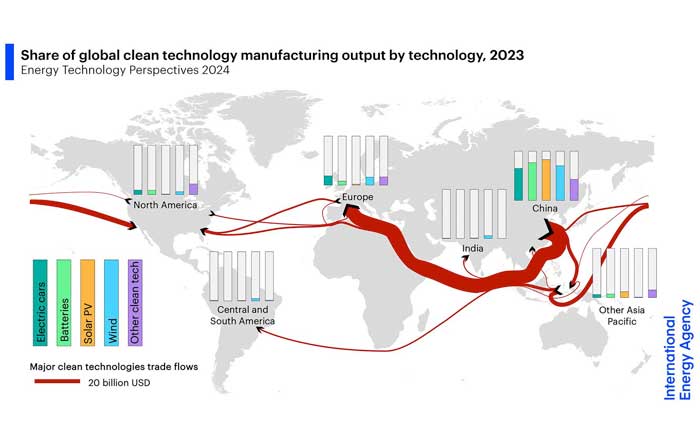Germany has long been recognized as the industrial heart of Europe, renowned for its engineering prowess, precision manufacturing, and globally respected brands such as Siemens, Bosch, Volkswagen, and BMW. With the dawn of the Fourth Industrial Revolution, Germany stands at a pivotal point once again—this time leading the integration of Artificial Intelligence (AI) and automation into its deeply-rooted manufacturing sector.
This transformation is not merely technological but also economic, cultural, and political. As 2025 unfolds, Germany's manufacturing sector is becoming a critical case study of how an advanced economy adapts to rapid digitization while maintaining its commitment to quality, sustainability, and workforce dignity.
Explore how AI and automation are reshaping Germany’s economic foundation in our dedicated economy section on UpBizInfo.
Germany's AI Manufacturing Revolution Timeline
Legacy Foundation
Germany's Mittelstand and industrial excellence established through precision manufacturing and engineering prowess
Crisis & Acceleration
COVID-19 pandemic and Ukraine war expose supply chain vulnerabilities, accelerating AI adoption for resilience
Strategic Implementation
AI Strategy 2025 launched with Digital Now funding, Platform Industrie 4.0, and GAIA-X data sovereignty initiative
Full Integration
Smart robotics, digital twins, and predictive maintenance deployed across SMEs; 2.1M jobs transitioning through upskilling programs
Sustainable Leadership
Carbon neutrality by 2045 supported by AI-optimized energy usage, circular manufacturing, and green technology exports
The Legacy of German Manufacturing and the Shift Toward AI
Germany's manufacturing strength is not accidental. The Mittelstand, Germany's network of small to medium-sized enterprises (SMEs), along with large multinationals, has historically been the backbone of the nation’s economy. These firms are known for their specialization in high-value, niche technologies and precision equipment.
However, with global competition intensifying, energy costs rising, and skilled labor shortages growing more acute, the push toward AI and automation has become a strategic imperative rather than a luxury. Leading organizations such as Fraunhofer Society, Leibniz Association, and Max Planck Institute have provided the scientific foundation for this transformation.
Germany’s shift toward AI is guided by its AI Strategy 2025, a federal initiative aiming to position the country as a global leader in ethical and sustainable AI. The strategy is reinforced by cross-sector partnerships between academia, industry, and government.
Read about how strategic business transformations are evolving in our business insights section.
Key Technologies Driving the Automation Shift
Germany’s manufacturing renaissance is powered by several core technologies that are redefining the nature of industrial production:
Smart Robotics
Companies like KUKA, Festo, and ABB have developed industrial robots with AI capabilities that allow for real-time decision-making, improved dexterity, and human-machine collaboration. These robots can learn from their environments, reducing error rates and enhancing production efficiency.
In the automotive sector, for instance, Volkswagen has deployed intelligent robotic arms across its assembly lines that not only assemble parts but also monitor quality in real time using machine vision systems.
Predictive Maintenance and Digital Twins
Predictive maintenance, powered by AI and IoT sensors, enables companies to detect equipment failures before they occur. Siemens, a leader in this field, utilizes digital twin technology to simulate and optimize manufacturing processes. This not only reduces downtime but also extends the life of expensive machinery.
Learn more about the evolving intersection of technology and industry and how it’s influencing Germany's economy.
Machine Learning and Adaptive Manufacturing
Machine learning algorithms are increasingly used to adjust production parameters on the fly. In Germany’s high-mix, low-volume sectors like precision tools and optics, adaptive manufacturing systems allow for greater customization without sacrificing speed or cost-effectiveness.
Companies such as Trumpf and Carl Zeiss AG are utilizing AI to dynamically modify production based on demand forecasting and client specifications—transforming efficiency and customer satisfaction.
The Labor Market: Disruption and Opportunity
The integration of AI in manufacturing inevitably affects the labor market. According to a 2025 report by the German Federal Ministry of Labour and Social Affairs, up to 2.1 million traditional jobs could be altered or displaced in the next five years. However, this shift is not inherently negative.
Germany's emphasis on upskilling and vocational education—through programs like Berufsausbildung 4.0—has helped equip workers with the skills necessary for the new digital landscape.
Organizations such as IG Metall, Germany's largest trade union, have been instrumental in negotiating training frameworks and AI usage guidelines to ensure workers are not left behind. Additionally, public-private collaborations are funding AI research hubs in cities like Dresden, Stuttgart, and Aachen, reinforcing regional innovation ecosystems.
Visit our employment hub to learn how automation is shaping jobs around the globe.
Sustainability and AI: Aligning Green Goals with Industrial Efficiency
Germany’s manufacturing transformation is occurring in parallel with its aggressive push for sustainability. As the largest economy in the European Union, Germany has set ambitious climate targets, including carbon neutrality by 2045. AI and automation are now central to achieving these goals, helping industries optimize energy usage, reduce waste, and create more resilient supply chains.
AI for Resource Optimization
BASF, the global chemical company headquartered in Ludwigshafen, has implemented AI-driven systems that analyze production inputs in real time to minimize energy consumption and emissions. These systems adjust chemical process parameters to balance efficiency and sustainability without compromising on quality.
BMW, meanwhile, uses AI to reduce paint waste in its manufacturing plants, applying machine learning algorithms to determine the precise amount of paint needed per vehicle. Similar technologies are being adopted by smaller firms within Germany's Mittelstand, contributing to collective progress on climate objectives.
Discover more on Germany’s green business transformation by visiting our sustainable practices page.
Circular Manufacturing and Waste Reduction
AI-powered platforms are enabling German manufacturers to transition toward circular economy models, where waste is minimized and materials are reused. Firms like Henkel and Siemens Energy are exploring closed-loop systems powered by AI analytics that track product life cycles, enabling parts to be recovered, refurbished, and reintroduced into production.
Additionally, machine learning models are used to predict and optimize recycling processes, sorting materials with incredible precision through computer vision. These innovations not only support Germany’s environmental ambitions but also position its manufacturers as global leaders in green technology exports.
Explore more on international industrial trends in our world affairs section.
SMEs and the Digital Divide: Bridging the Gap with Policy and Infrastructure
While large companies lead in AI adoption, Germany’s SME sector—comprising over 99% of businesses—remains a critical battleground for digital transformation. Many smaller firms struggle with limited access to capital, talent, and data infrastructure needed to fully implement AI and automation.
Government Initiatives and Funding Programs
To address this gap, the German government launched the Digital Now funding initiative, offering financial support to SMEs for investing in AI tools, digital skills training, and cloud infrastructure. Additionally, Platform Industrie 4.0, a public-private initiative, provides guidelines, technical frameworks, and success stories to assist SMEs on their digital journey.
ZVEI, the German Electrical and Electronic Manufacturers' Association, also plays a key role in guiding companies through the AI adoption process. The creation of innovation hubs, particularly in industrial regions like Baden-Württemberg, ensures that smaller firms can access shared infrastructure and collaborate on AI experimentation.
Learn how businesses are adapting through the insights provided in our founders’ perspectives section.
Cloud AI and Plug-and-Play Platforms
Cloud-based AI solutions are proving especially valuable for SMEs that lack extensive in-house expertise. Companies such as SAP, Celonis, and TeamViewer are offering affordable, modular platforms that allow smaller manufacturers to automate logistics, procurement, and production planning without needing full-scale infrastructure investments.
These tools also provide predictive analytics and data-driven insights that were previously only accessible to large corporations. The democratization of AI is now a key pillar in sustaining Germany’s industrial competitiveness.
Explore more on the role of software and digital platforms in our technology features section.
International Trade, Resilience, and Global Competition
Germany's manufacturing landscape is closely tied to its export economy. As of 2025, it remains the third-largest exporter globally, with manufacturing accounting for over 70% of its exports. AI and automation have become essential tools for preserving this status in a world of volatile supply chains and rising geopolitical tensions.
Resilient Supply Chains and Smart Logistics
The COVID-19 pandemic and the war in Ukraine exposed vulnerabilities in global supply networks. In response, German manufacturers have embraced AI to enhance supply chain resilience. Predictive algorithms now model risk scenarios and dynamically reroute sourcing and distribution to avoid disruption.
DHL, DB Schenker, and Hellmann Worldwide Logistics have all deployed AI logistics platforms capable of optimizing global freight operations in real time. This has helped manufacturers reduce delays, mitigate risks, and minimize carbon emissions associated with inefficient transport routes.
Competing with the U.S. and China
Germany’s manufacturers face growing competition from the United States and China, both of which have also heavily invested in industrial automation. However, Germany distinguishes itself through its commitment to high precision engineering, energy efficiency, and data privacy in AI systems.
The German model prioritizes collaboration over domination. Instead of monopolizing AI platforms, companies often participate in open innovation ecosystems, such as GAIA-X, a European initiative promoting secure and interoperable data infrastructure.
For comparative insights, check out our markets overview to explore how industrial players are evolving across global regions.
Ethics, Data Sovereignty, and the Human Element in Germany’s AI Journey
As Germany accelerates AI deployment across its manufacturing backbone, policymakers, technologists, and civil society are increasingly emphasizing ethical governance, data sovereignty, and the need to protect human dignity in the age of machines. The country's response is unique, shaped by its cultural emphasis on privacy, historical sensitivities, and strong labor institutions.
Ethical AI and Transparent Algorithms
Germany is leading the charge in defining ethical AI standards, ensuring that automation does not come at the cost of fairness or accountability. Under the guidance of institutions like the German Ethics Council, new frameworks require companies to explain how AI systems make decisions, especially those involving employee assessments, supply chain evaluations, or financial forecasting.
Unlike the more laissez-faire approaches seen in other global markets, German firms are expected to provide algorithmic transparency, particularly when deploying AI in safety-critical environments such as automotive manufacturing or chemical production. Companies like Robert Bosch GmbH and ZF Friedrichshafen have published white papers detailing their commitment to trustworthy AI.
For more in-depth analysis of regulatory and ethical trends, see our AI policy section.
Data Ownership and GAIA-X
One of Germany's boldest moves in protecting digital sovereignty is GAIA-X, a European cloud infrastructure project intended to provide an alternative to the dominance of U.S. and Chinese cloud providers. GAIA-X promotes interoperability, user control over data, and transparency in data usage—a vital consideration for manufacturers integrating AI and IoT systems.
This initiative is supported by both public institutions and private players, including Deutsche Telekom, Siemens, and BMW Group. It ensures that sensitive industrial data remains under European control, a move that resonates deeply with Germany’s federal and industrial culture.
Worker Rights and the Role of Human Supervision
Despite rapid automation, Germany has not abandoned its workforce. Instead, it has embraced a collaborative model in which humans and machines operate in tandem. This concept—known as "cobotics"—ensures that workers retain decision-making authority, particularly in areas where human judgment is crucial.
Programs led by IG Metall and the Federal Institute for Vocational Education and Training (BIBB) have introduced new qualifications for digital technicians, AI maintenance roles, and cybersecurity engineers. The result is a redefinition of labor rather than the elimination of it, aligning AI deployment with the country’s social values.
Read more about job transitions and education models in our jobs and employment section.
Future Outlook: Investment, Policy, and Strategic Global Partnerships
Germany's long-term success in AI-enabled manufacturing will hinge on sustained investment, supportive policy environments, and global partnerships that enhance both innovation and resilience. The next decade promises both challenges and breakthroughs as the country aligns its industrial strength with digital sophistication.
Scaling Investment in AI Startups and Deep Tech
Germany has seen a rise in AI startup ecosystems, especially in cities like Berlin, Munich, and Karlsruhe. These hubs are home to pioneering companies in industrial AI, robotics, and sensor technology—including Konux, ArtiMinds Robotics, and Twenty Billion Neurons.
Government-backed venture initiatives such as High-Tech Gründerfonds (HTGF) and Digital Hub Initiative are helping these startups scale by providing capital, mentorship, and integration opportunities with established manufacturers.
Visit our investment portal for more insights on financing innovation in tech and industry.
Policy Roadmaps and EU-Level Integration
Germany’s AI Action Plan 2025 emphasizes not just technological growth but cross-border collaboration with European neighbors to ensure shared progress and competitive parity with the U.S. and China. This includes participating in Horizon Europe, the EU’s research and innovation program, and aligning manufacturing standards across borders.
The plan also supports developing standardized AI testing frameworks to ensure compliance with EU regulations, such as the AI Act, which sets strict risk-based classifications and obligations for AI developers and deployers.
Talent, Inclusion, and Education for the AI Era
A future-proof AI strategy depends on people, not just machines. Germany continues to reform its education system to integrate AI literacy, machine learning fundamentals, and digital ethics into university curricula and vocational programs.
Institutions like RWTH Aachen University, TU Munich, and Karlsruhe Institute of Technology are globally ranked for engineering and now focus heavily on interdisciplinary AI applications. Meanwhile, industry-led initiatives like Siemens’ Dual Education Program provide hands-on learning in AI environments from an early age.
Check out our education and founders section for more on how Germany’s leaders are nurturing the next generation of digital thinkers.
Germany’s AI-Powered Manufacturing Revolution and Its Global Significance
Germany’s fusion of artificial intelligence, automation, and industrial craftsmanship is more than a domestic transformation—it is a blueprint for the future of global manufacturing. By placing a high premium on ethics, precision, education, and collaboration, Germany is managing to digitize its core industries while maintaining the values that made it an economic powerhouse in the first place.
Real-World Case Studies from German Industry Leaders
The depth of this transformation becomes evident when examining how some of Germany’s top industrial players are leveraging AI to reshape manufacturing from the ground up.
Siemens: The Digital Twin Pioneer
Siemens, one of the most influential global manufacturing firms, is using digital twin technology to create virtual models of entire production lines. These AI-powered simulations allow factories to anticipate breakdowns, reduce emissions, and enhance productivity. Siemens’ MindSphere cloud-based platform connects billions of sensors worldwide to gather real-time data used in optimizing industrial processes—enabling sustainability and profitability to coexist.
BMW Group: AI in Automotive Precision
The BMW Group uses AI across its entire value chain—from supply chain logistics and component inspection to in-plant production automation. At its plant in Dingolfing, machine learning is deployed to optimize the movement of robots that transport parts. AI systems also analyze defects in real-time using high-definition imaging, ensuring quality control while reducing the need for manual inspection.
Trumpf: Smart Lasers and Edge AI
Trumpf, a leader in laser technology and machine tools, integrates AI at the edge to empower its machinery with adaptive learning capabilities. These machines adjust in real time to material characteristics, operator preferences, and environmental conditions, dramatically improving precision and reducing setup times. Their Axoom smart factory platform also offers cloud services to clients, allowing for scalable deployment of AI-driven manufacturing processes.
Explore more leading German companies and AI pioneers in our news spotlight section.
Lessons for the Global Community
The German model offers valuable lessons for both developed and emerging economies navigating the complexity of digital industrialization:
Balance Between Innovation and Regulation: Germany demonstrates that it is possible to innovate without abandoning human rights, data privacy, or worker dignity. Ethical AI is a strength, not a barrier.
Public-Private Collaboration: The country’s manufacturing transition is not the result of isolated enterprise but a coordinated national effort involving government ministries, universities, unions, and businesses working in sync.
Emphasis on Mid-Sized Enterprises: Germany’s unique focus on its Mittelstand firms ensures that the benefits of AI are not concentrated among mega-corporations alone. This approach strengthens economic resilience and regional development.
Education as a Strategic Pillar: Instead of resisting change, Germany is investing in its people—equipping workers with skills needed for a hybrid future where humans and machines co-create value.
Strategic Implications for Investors, Entrepreneurs, and Policy Leaders
For international stakeholders, Germany’s manufacturing transformation presents significant opportunities and risks. Investors are increasingly targeting AI-driven startups and Industry 4.0 firms based in Germany, especially in sectors like robotics, industrial software, green manufacturing, and cyber-physical systems.
Entrepreneurs seeking to enter the German market must align with its regulatory ethos—particularly in areas like data sovereignty and sustainable development. However, the potential for scalable growth and technological partnership is vast, given Germany's integration into EU supply chains and its reputation for quality engineering.
Policy leaders worldwide can draw from Germany's integrated approach to AI—not just as a business advantage, but as a social and cultural transformation. The German case reinforces that automation should not be viewed solely through the lens of cost-cutting but as an opportunity to evolve economic systems in ways that are inclusive, sustainable, and future-focused.
Dive deeper into economic strategies at our economy hub and monitor global market dynamics.
Final Reflections: A Model for the AI-Driven Industrial Future
As 2025 progresses, Germany remains at the frontier of manufacturing innovation—demonstrating that AI and automation, when aligned with ethical frameworks and inclusive policies, can be transformative forces not only for business outcomes but for national progress.
Germany’s experience reveals that embracing AI does not mean erasing tradition; instead, it offers a chance to augment human potential, make better use of natural resources, and build a more competitive yet equitable industrial future.
For the global community—from policy makers in Ottawa and entrepreneurs in Bangalore to factory operators in Ohio and venture capitalists in London—Germany’s story serves as a living example of how to responsibly scale the Fourth Industrial Revolution.
To stay updated on developments like these and more from the heart of global industry and AI, visit UpBizInfo and explore our specialized sections on AI, Technology, Sustainability, Employment, Business, and beyond.








